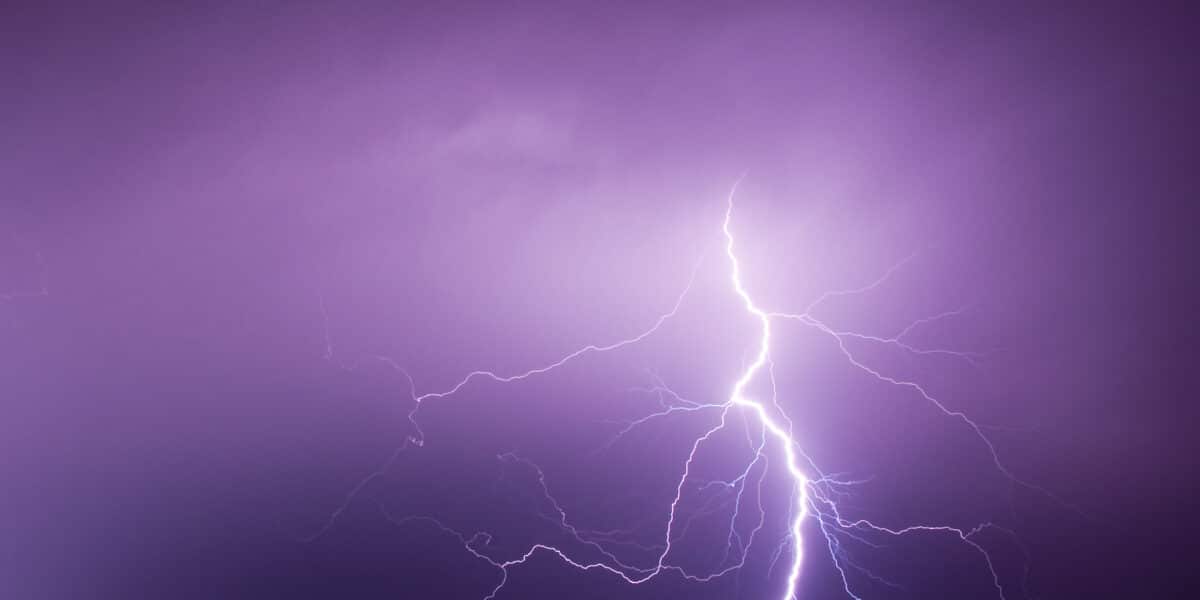In recent years, there have been 200–350 disturbances in Finland’s main grid every year. The most typical causes are natural phenomena and weather conditions that occur all year round.
Many faults are caused by migratory birds in the spring and autumn. In the summer, thunderstorms and falling branches cause problems, while frost and snow burdens are specific to the winter.
“Snow burdens accumulate on earthing wires above the phase wire. When the weight of the snow causes the earthing wire to touch the phase conductor, a fault occurs in the main grid,” says Jari Honkanen, Expert in Relay Protection at Fingrid.
Similar problems can be caused if migratory birds with large wingspans collide with the wires.
“In addition, large trees can also fall onto transmission lines. These situations are rarer, as transmission line rights-of-way are cleared regularly.”
Lightning strikes cause the largest number of disturbances in the main grid. In a typical case, lightning strikes a main grid transmission line or earthing wire directly. The high current present in the lightning creates a voltage spike in the conductor that discharges across the line insulation, forming an arc. This results in a short circuit between the phases or an earth fault between the phase conductor and the tower.
Relay protection responds rapidly to faults
Main grid disturbances rarely cause larger problems, as the grid is equipped with relay protection. A relay is a device used to isolate a defective line from the rest of the network in the event of a fault.
Fingrid uses distance and differential relays to protect the main grid and locate short circuits and earth faults. The location information can be used to isolate the faulty line from the grid in the event of a disturbance.
Relay protection disconnects a short circuit fault within 0.1 seconds of its onset.
“Relay protection detects a change in voltage caused by a direct lightning strike on the transmission line and knocks the line off by disconnecting the electrical power from it. Relay protection isolates all short-circuit faults in the 400 kilovolt grid within 0.1 seconds of their onset. This helps to maintain stability in the main grid,” says Honkanen.
When the power is cut, the arc stops, and the relays can then switch the line voltage back on. However, this step must be slowed down, as arc-ionised air can reignite the arc. A full-line disconnection and reconnection event typically takes 1–3 seconds.
Short circuits high in the sky pose no hazard to the environment. However, if an earth fault occurs, the voltage spreading around the tower presents a danger to any people and animals nearby. Therefore, disturbances must be resolved without delay.
“Prolonged faults cause voltage dips in the main grid that affect manufacturing processes, power plants and electricity transmission. In the worst case, prolonged voltage dips could lead to a blackout, which would take down the entire main grid,” says Honkanen.
Fortunately, these situations have not been encountered for decades.
“Of course, we have planned the action to take in such an event, and Fingrid practises restarting the main grid based on these plans.”
Travelling wave measurements reveal fault locations more precisely
In addition to relay protection, Fingrid uses travelling wave measurements to reveal the locations of faults and disturbances. Faults can now be repaired more quickly thanks to equipment investments that began in the last decade.
Fault location based on travelling waves works by using sensors in travelling wave meters to measure the current and voltage levels in conductors and react when the permitted thresholds are crossed. The fault is located by an app that calculates the location based on the timestamp provided by the travelling wave meter and the velocity of the travelling wave.
“Previously, the only way to locate a fault was to patrol over several kilometres. Now, travelling wave location enables faults to be located to within a few hundred metres. This allows corrective measures to begin sooner, reduces the costs of patrolling for faults, and improves electrical safety in the environment.”






